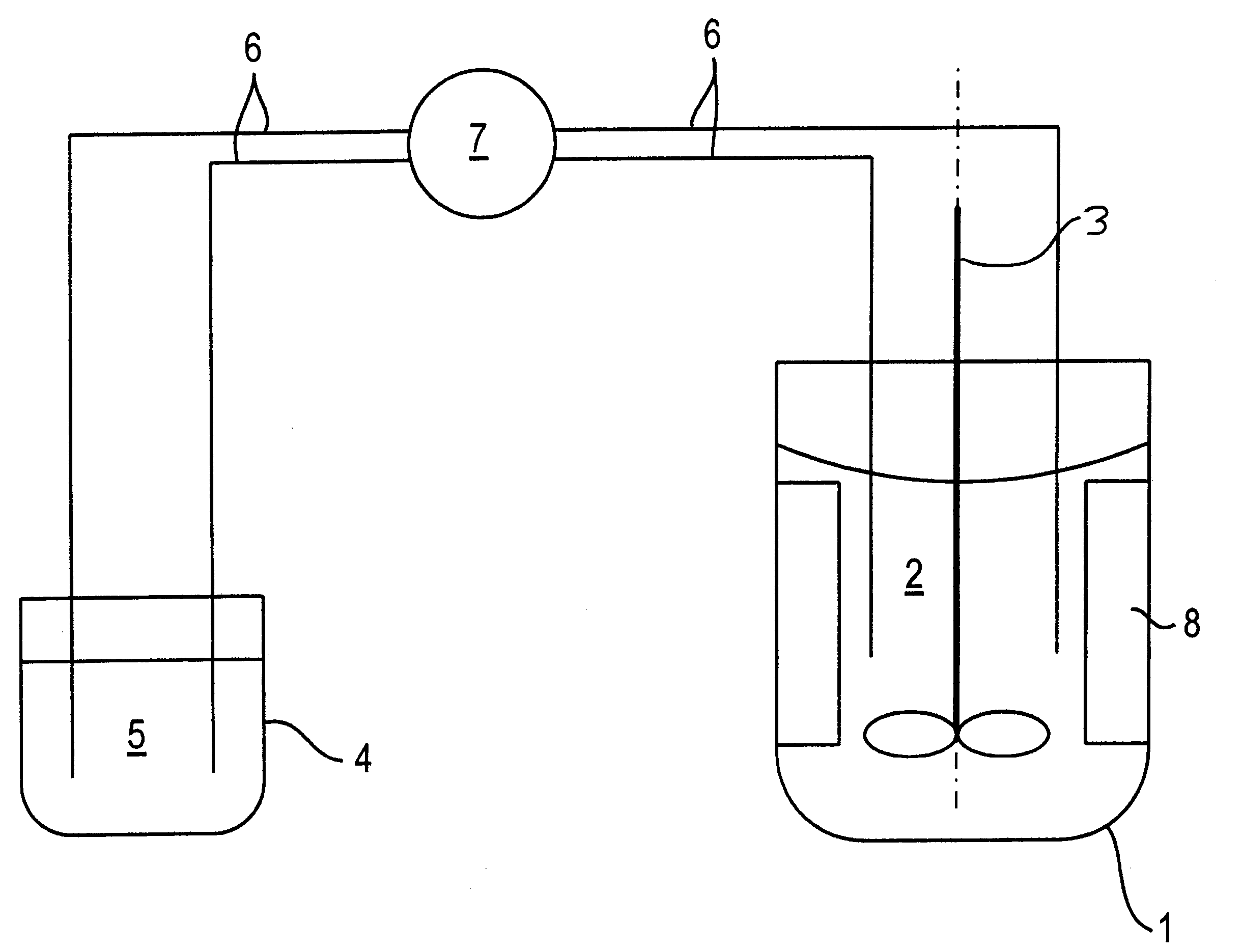Oxygen storing material with high thermal stability and a process for preparation and use thereof
a technology of thermal stability and storage material, which is applied in the direction of catalyst activation/preparation, metal/metal-oxide/metal-hydroxide catalyst, chemical/physical process, etc., can solve the problem of not being able to dissolve completely variable amounts of cerium salts, too high percentage of cerium oxide obtained, etc. problem
- Summary
- Abstract
- Description
- Claims
- Application Information
AI Technical Summary
Problems solved by technology
Method used
Image
Examples
example 1
Powder A was impregnated with an aqueous solution of praseodymium nitrate [Pr(NO.sub.3).sub.3.5H.sub.2 O)] using pore volume impregnation. During pore volume impregnation, the component being applied by impregnation is dissolved in a volume of solvent which corresponds to 80 to 100% of the absorption capacity of the powder for the relevant solvent,
After drying the impregnated powder at 120.degree. C. it was calcined in air at 600.degree. C. for 2 hours in order to convert the praseodymium nitrate into the corresponding oxide. In order to ensure uniform heating throughout the powder being treated, the temperature was increased to the desired 600.degree. C. over the course of 4 hours. The final powder contained 5 wt. % of praseodymium oxide (Pr.sub.6 O.sub.11), with respect to the total weight of powder. This material is called powder B in the following.
example 2
In order to compare powder B with a material of the same composition but which had been prepared by coprecipitation, an aqueous solution of cerium nitrate, zirconyl nitrate and praseodymium nitrate was made up. The solution had a pH of 2. Cerium, zirconium and praseodymium were precipitated simultaneously in the form of their hydroxides by slowly adding a dilute ammonia solution. The precipitate was filtered off, washed, dried at 120.degree. C. and then calcined at 600.degree. C. in air for a period of 2 hours in order to convert the hydroxides into the corresponding oxides. The rate of heating to the final temperature of 600.degree. C. was performed in the same way as in example 1. The final material (powder C) contained, like powder B, 66.5 wt. % of cerium oxide, 28.5 wt. % of zirconium oxide and 5 wt. % of praseodymium oxide.
example 3
Powder A was dispersed in water and coated with praseodymium by means of the homogeneous precipitation process using praseodymium acetate and 5 wt. % strength ammonia solution. As in the preceding examples, the coated powder was filtered off, dried at 120.degree. C. and then calcined in air at 600.degree. C. for a period of 2 hours. This powder is called powder D in the following. It had the same composition as powders B and C.
PUM
| Property | Measurement | Unit |
|---|---|---|
| specific surface area | aaaaa | aaaaa |
| particle size | aaaaa | aaaaa |
| particle size | aaaaa | aaaaa |
Abstract
Description
Claims
Application Information
 Login to View More
Login to View More - R&D
- Intellectual Property
- Life Sciences
- Materials
- Tech Scout
- Unparalleled Data Quality
- Higher Quality Content
- 60% Fewer Hallucinations
Browse by: Latest US Patents, China's latest patents, Technical Efficacy Thesaurus, Application Domain, Technology Topic, Popular Technical Reports.
© 2025 PatSnap. All rights reserved.Legal|Privacy policy|Modern Slavery Act Transparency Statement|Sitemap|About US| Contact US: help@patsnap.com



